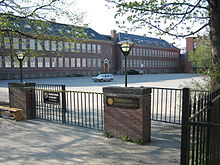
The Carolingian Renaissance was the first of three medieval renaissances, a period of cultural activity in the Carolingian Empire. Charlemagne's reign led to an intellectual revival beginning in the 8th century and continuing throughout the 9th century, taking inspiration from ancient Roman and Greek culture and the Christian Roman Empire of the fourth century. During this period, there was an increase of literature, writing, visual arts, architecture, music, jurisprudence, liturgical reforms, and scriptural studies. Carolingian schools were effective centers of education, and they served generations of scholars by producing editions and copies of the classics, both Christian and pagan.
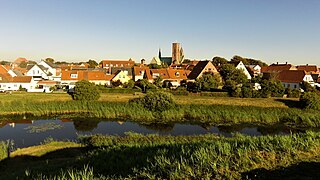
Ribe is a town in south-west Jutland, Denmark, with a population of 8,295 (2024). It is the seat of the Diocese of Ribe. Until 1 January 2007, Ribe was the seat of both a surrounding municipality and county. It is now part of the enlarged Esbjerg Municipality in the Region of Southern Denmark. It is the oldest town in Denmark.

Southwark Cathedral or The Cathedral and Collegiate Church of St Saviour and St Mary Overie, Southwark, London, lies near the south bank of the River Thames close to London Bridge. It is the mother church of the Diocese of Southwark. It has been a place of Christian worship for more than 1,000 years, but the church was not raised to cathedral status until the creation of the diocese of Southwark in 1905.
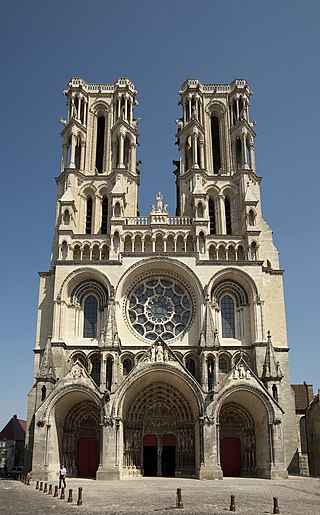
Laon Cathedral is a Roman Catholic church located in Laon, Aisne, Hauts-de-France, France. Built in the twelfth and thirteenth centuries, it is one of the most important and stylistically unified examples of early Gothic architecture. The church served as the cathedral of the Diocese of Laon until 1802, and has been recognized as a monument historique since 1840.

The Anglican Church of Canada is the province of the Anglican Communion in Canada. The official French-language name is l'Église anglicane du Canada. In 2022, the Anglican Church counted 294,931 members on parish rolls in 1,978 congregations, organized into 1,498 parishes. The 2021 Canadian census counted 1,134,315 self-identified Anglicans, making the Anglican Church the third-largest Canadian church after the Catholic Church and the United Church of Canada.

Royal St. George's College (RSGC) is an Anglican-affiliated independent school for boys located in The Annex neighbourhood of Toronto, Ontario, Canada. The school admits boys from Grades 3 through 12. Founded in 1961 as an Anglican choir school in the tradition of the great collegiate and cathedral choir schools in the United Kingdom, the school admitted its first students in 1964. It is the only pre-university school in Canada authorized to use the "Royal" designation, and it houses the historic Chapel of St. Alban-the-Martyr, the former cathedral of the Anglican Diocese of Toronto, and the See House, the former Queen Anne Revival style residence of the Bishop. RSGC is also the official choir school for the Cathedral Church of St. James.
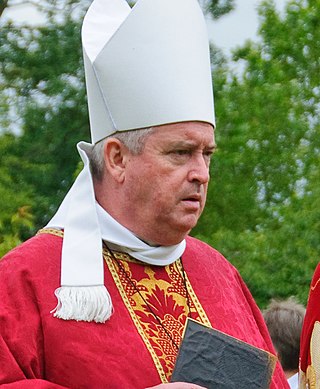
Graeme Paul Knowles is a retired Anglican bishop. He served latterly as the Acting Dean of St Edmundsbury, having previously served as Bishop of Sodor and Man and as Dean of St Paul's.
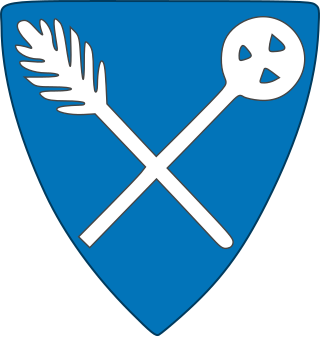
Schola Osloensis, known in Norwegian as Oslo Katedralskole and more commonly as "Katta", is a selective upper secondary school located in Oslo, Norway.

Saint Paulinus II was a priest, theologian, poet, and one of the most eminent scholars of the Carolingian Renaissance. From 787 to his death, he was the Patriarch of Aquileia in what is now northeastern Italy. He participated in a number of synods which opposed Spanish Adoptionism and promoted both reforms and the adoption of the Filioque into the Nicene Creed. In addition, Paulinus arranged for the peaceful Christianisation of the Avars and the alpine Slavs in the territory of the Aquileian patriarchate. For this, he is also known as the apostle of the Slovenes.

St. Agnes Cathedral is a Roman Catholic Cathedral in Rockville Centre, New York, on Long Island. It is the seat of the Diocese of Rockville Centre. The Most Reverend John Oliver Barres is the ordinary bishop of the Diocese and pastor of the Cathedral parish. The Saint Agnes Cathedral School is on campus with the Cathedral.
Carolingian schools comprised a small number of educational institutions which had a major share in the Carolingian Renaissance, specifically cathedral schools and monastic schools.
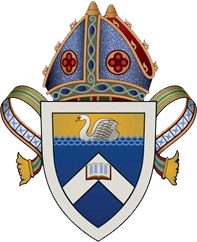
The Diocese of Gippsland is a diocese of the Anglican Church of Australia, founded in 1902. It is situated in the Gippsland region of the state of Victoria, Australia and covers most of the eastern part of the state. The diocesan cathedral is St Paul's Cathedral, Sale. The current Bishop of Gippsland, installed on 18 August 2018, is Richard Treloar.

Katedralskolan is a public gymnasium in Uppsala, Sweden. The school was, according to tradition, established in 1246. It is the oldest educational institution in Uppsala, and one of the oldest in Sweden.

Lowther Hall Anglican Grammar School, most often referred to simply as Lowther Hall, is a private, comprehensive single-sex primary and secondary day school for girls, located in Essendon, an inner suburb of Melbourne, Victoria, Australia.
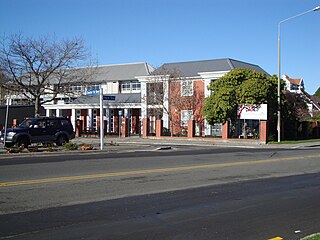
The Cathedral Grammar School is an independent, Anglican preparatory day school in Christchurch, New Zealand. The school is situated on a site covering two blocks in mid-Christchurch next to the Avon River and adjacent to Hagley Park, which it uses for its playing fields. It is in close proximity to Christ's College, the Canterbury Museum, the Christchurch Art Gallery and the Christchurch CBD.

Primary education or elementary education is typically the first stage of formal education, coming after preschool/kindergarten and before secondary school. Primary education takes place in primary schools, elementary schools, or first schools and middle schools, depending on the location. Hence, in the United Kingdom and some other countries, the term primary is used instead of elementary.
St. Cyprian's Grammar School in Kimberley, South Africa, is a co-educational English-medium independent school for Grades R and 1–12, attached to St Cyprian's Cathedral. In its present form it opened to 83 students on 21 January 2009. St Cyprian's is one of the pilot schools within the Historic Schools Restoration Project initiated by Archbishop Emeritus Njongonkulu Ndungane.
The Epistola de litteris colendis is a well-known letter addressed by Emperor Charlemagne to Abbot Baugulf of Fulda, probably written sometime in the late 780s to 800s (decade), although the exact date is still debatable. The letter is a very important witness to the Carolingian educational reforms during the Carolingian Renaissance from the late 8th century to the 9th century. The letter shows Emperor Charlemagne's interest in promoting learning and education within his empire.
Barry Valentine was bishop of the Diocese of Rupert's Land in the Anglican Church of Canada from 1970 to 1982. Valentine's episcopacy was "transformational and visionary."
